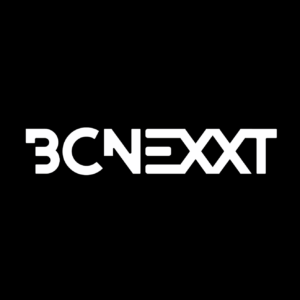Zixi – Factors contributing to the TCO of streaming at scale

John Wastcoat, SVP, Strategic Alliances and Marketing, Zixi
In the dynamic world of video streaming, media organizations are constantly seeking efficient and cost-effective solutions to manage their large-scale implementations. One of the key metrics that has to be met to validate any purchase decisions is Total Cost of Ownership (TCO). And, like Maslov’s famous Hierarchy of Needs, TCO analysis must start with foundational requirements.

Unfortunately, many media companies suffer from what we can term upside-down thinking. They start at acquisition cost and never fully look at the total picture. As we will show below, solutions that utilize an Open Source Protocol are assumed to be the most cost-effective, but when fully analyzed end up being more expensive and inefficient. The ultimate goal for many is monetization, but that is not likely to occur or be optimal without QoS and QoE. Without fully analyzing the full stack of costs leading up to the potential for monetization, upside-down thinking can occur, and benefits are either not realized or are pegged back to be less than they would be if the solution deployed was optimized.
Considerations for optimizing TCO
There are a broad range of factors we must consider when looking at a solution for streaming at scale. We list some of them below.
Compute Efficiency: Increased compute efficiency plays a pivotal role in reducing the complexity and cost associated with managing the large-scale implementations of the modern broadcaster. Open Source protocols tend to be under optimized and suffer dramatically in this regard, leading to snowballing penalties in terms of energy costs and when measured against sustainability metrics. The factor varies with the solutions chosen, but we see figures of our own optimized SDVP with the Zixi Protocol only requiring 7% of the compute requirement of other options, so this is a major consideration.
Reduced Infrastructure Requirements: Improved efficiency eliminates the need for excessive virtual machines, which can also lead to substantial cost savings. By requiring fewer virtual machines to handle the same workload, organizations can significantly reduce operational costs, including compute, engineering, operations, and energy consumption.
Bandwidth Optimization: This is a crucial part of the process as it can help media organizations reduce their bandwidth consumption and transport stream egress costs by up to 50% while maintaining video quality and producing the pre-encode bitrate post-decode. There are several technologies that can assist here such as Null Packet Compression and Video Payload Awareness, allowing broadcasters to allocate their resources more efficiently, redirecting budgetary allocations to other critical areas. Needless to say, this cost reduction can have a profound impact on the TCO of video streaming implementations.
Media Processing: In an ideal scenario, transcode capabilities should be able to be used anywhere in the media supply chain: on-prem, in the cloud, at the edge, or in a hybrid solution.
This adaptability allows bit rates to be optimized, as high bit rate production signals are reduced when the stream meets a business partner or is prepared for audience consumption. In live events, linear workflows can leverage low bit rate slates to minimize egress costs in between higher bit rate programming events.
Architecture: As media organizations move to IP and cloud-based workflows, it becomes obvious that architectural design drives project economics. Point-to-point calculations are not relevant as workflows scale.
There are several considerations here
- Individual point-to-point and Virtual Machine (VM) versus, for example, media server clusters.
- Unit cost per stream and processed services managed at scale.
- Hybrid infrastructure that marries on-premises, direct network connections and the cloud.
- Managing the value of redundancy. Tier 1 content versus Tier 3, and what is the commercial value assigned to a program’s SLA.
The goal is to be able to optimally leverage all available IP infrastructures to minimize compute and egress costs while providing the base for growth at scale with fractional incremental investment. Multi-cloud deployments are supported, allowing optimized egress rates across vendors while providing network diversity for redundancy.
Control Plane:
Legacy program channels multiply exponentially as they convert to IP streams. More takers generate more revenue, but management of existing resources across a variety of technical skill sets requires a force multiplier. A software-defined SaaS solution gives finite resources the ability to hyper scale.
As an illustration of this, we have recently worked with FOX in our Affiliate Program. Implementations like FOX start with a few hundred affiliates/channels, but once you add primary and secondary ingest, intra-cloud, streams for eyes on glass monitoring and then egress of primary and secondary streams to the ultimate number of takers it becomes 3,000+ streams. That can become quickly unmanageable without the right solution in place.
Time is Money. It is critical to assess how fast a technical deployment can be rolled out. How agile is it through the change process? How easily can Phase 1 be extended to Phase 2? How do you build a modular tech platform across the media enterprise that is future-proof?
System interoperability needs to be considered too. Modern workflows and technical workstreams utilize many vendors across the media supply chain. Established interoperability minimizes deployment risk and ensures reduction of traditional project timelines.
Operations:
Once a project is rolled out, the operational phase becomes critical. How many new tasks have been created? How do operational and technical resources orchestrate workflow individually and between teams?
Monitoring aspects: The traditional approach of “eyes on glass” that would cover 10-12 channels per operator becomes untenable as 100s of channels and 1000s of streams are delivered. Exception-based alerts driven by telemetry are the new normal, and only when there is an issue does the system alert generate a call to action.
Incident and Root Cause Analysis (RCA): Knowing there is an issue naturally is followed by where it is and how to resolve it. This leads to a large, multidisciplinary set of teams that need a common view and toolset that confirms and rectifies the issue while providing all the relevant telemetry and logs to verify the analysis.
The industry average for RCA of a given program channel is $500k per year. The ability to reduce the raw time and resource exposure in RCA and allow system scale with current resources means that focus can remain on content creation and audience engagement rather than staffing.
Engineering:
Engineering Subject Matter Experts (SME) in broadcast video, networking, security and cloud are inherently scarce and expensive. This means that it is more important than ever to inform and mobilize those resources across a range of disciplines. Detailed telemetry, logs and reports allow SMEs to interact efficiently with inter and intra-company teams without prejudice, using a single source of truth and resolve an issue while implementing safeguards to prevent future reoccurrence.
Migration to IP and the cloud with live video is a new and specialized engineering skill set. From production to distribution, the expertise required in any given workflow varies. Having a unified software-defined platform allows highly efficient synchronization of engineering disciplines in real time that has faster times to resolution while allowing teams to cover the scale of operation on a global basis. The streaming workflows are deployed at divisional, regional and global levels and require the diverse technical resources to design, implement and commission the streaming roll out as well as prepare for operational hand off. Any solution’s ability to use scripting, APIs and multi-vendor integrations allows this process to be highly agile and rapid, while utilizing engineering resources most efficiently and effectively.
Industry transformation:
Migration to IP and the cloud ideally requires a single, unified software-defined platform that spans the transformation from legacy deployments to modern, advanced IP-based workflows for higher quality content, FAST channels and enhanced viewer experiences. Major use cases that need to be considered include satellite rationalization, OTT, D2C, 5G, and multicast to STB.
In conclusion, TCO optimization for organizations managing large-scale video streaming implementations is a vital consideration. The ideal solution marries efficiency, reduced infrastructure requirements, bandwidth optimization and transport stream egress cost reduction together to empower media companies to maximize their resources, minimize expenses and deliver high-quality video content reliably. By leveraging the correct technology, organizations can embrace a future where cost-effectiveness and operational excellence go hand in hand, opening up new possibilities for growth, innovation and enhanced live video streaming experiences.









